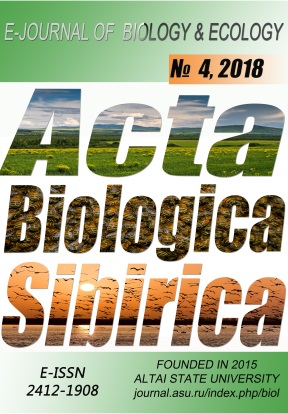Abstract
During the years 1996-2001, the line transect method has been employed to assess the species composition, dominance structure and relative abundance of birds resident in traditional farmlands, in the lowlands (10 transects with the total length of 43.9 km) and foothills (10 transects with the total length of transects 46.5 km) of Lesotho, southern Africa. This has been done to show the role of this farming in biodiversity conservation. A total of 76 resident species have been recorded in farmlands of Lesotho, 62 species in the lowlands and 53 species in the foothills. In the lowland farmlands the dominant group was composed of 6 species, namely the Prinia, Cape Bunting, Cinnamon-breasted Bunting, Cape Canary, Neddicky and Common Quail (35.8 %); in the foothills the group was composed 5 species: Karoo Prinia, Cape-turtle Dove, Laughing Dove, Cape Bunting and Cape Canary (35.9 %). Eighteen species bred in significantly different densities in lowlands and foothills. While insectivorous birds were more numerous in the lowland than foothill, the reverse was true with granivorous birds. Those two guilds comprised together 78% and 83% in the lowland and foothill respectively. The proportion of species in each guild was similar. In the lowland farmland the following eight species were more common that in the foothill farmlands, while in foothill farmland 10 species were more numerous than in lowland farmland. Species diversity and evenness were strikingly high and similar in lowlands and foothills, although Sorensen Similarity Index between these two areas was low (I = 0.44). Both species diversity and structure of dominance in avian communities in Lesotho farmlands indicate that the traditional farming play a positive role in biodiversity conservation.
References
Ambrose, D., Talukdar, S., Pomela, E.M. (2000). Biological diversity in Lesotho: a country study. Maseru: National Environment Secretariat.
Bibby, C.J., Burgess, N.D., Hill, D.A. (1992). Bird census technique. London: Academic Press.
Bonde, K. 1993. Birds of Lesotho: a guide to distribution past and present. Pietermaritzburg: University of Natal Press.
Harding, N.J., Green, R.E., Summers, R.W. (1994). The Effect of Future Changes in Land Use on Upland Birds in Britain. Sandy: RSPB.
Hockey, P.A.R., Dean, W.R.J., Ryan, P.G., Maree, S. (eds.) (2005). Roberts’ Birds of Southern Africa. Cape Town: John Voelcker Bird Book Fund.
Kopij, G. (2001). Areas proposed for environmental education and biodiversity conservation in Maseru district, Lesotho. P.150-167. In: Mokuku T., Bitso L. and Lana A. F. (eds.). Environmental education for sustainable development: African Perspectives. Maseru, October 2001.
Kopij, G. (2002). The birds of Sehlabathebe National Park, Lesotho. Koedoe 45(1), 65-78.
Kopij, G. (2006a). The structure of assemblages and dietary relationships in birds in South African grasslands. Wrocław: Wydawnictwo Akademii Rolniczej we Wrocławiu.
Kopij, G. (2006b). Bird assemblages in natural and urbanized habitats in Morija area, Lesotho. Zeszyty Naukowe Uniwersytetu Przyrodniczego we Wrocławiu, nr 548, Biologia i Hodowla Zwierząt, 54, 69-77.
Kopij, G. (2010). Sandstone plateaus as bird refugia in Lesotho lowlands, southern Africa. Berkut, 19(1/2), 39-48.
Kopij, G. (2014). Namibian Wildlife Bibliography from the earliest time to 2010. Katima Mulilo, University of Namibia.
Morelli, M., Tryjanowski, P. (2017). Birds as Useful indicator of high Nature Value Farmland. Springer.
Moyo, S., O’Keefe, P., Sill. M. (1993). The southern African environment: Profiles of SADC Countries. London: Earthscan Publications.
Newton, I. (2017). Farming and birds. Harper Collins.
Sutherland, W.J. (1996). Ecological census techniques: a handbook. Cambridge (U.K.): Cambridge University Press.
Wilson, J. D., Evans, A.D., Grice, P.V. (2009). Bird conservation in agriculture. Cambridge: Cambridge University Press.
Acta Biologica Sibirica is a golden publisher, as we allow self-archiving, but most importantly we are fully transparent about your rights.
Authors may present and discuss their findings ahead of publication: at biological or scientific conferences, on preprint servers, in public databases, and in blogs, wikis, tweets, and other informal communication channels.
ABS allows authors to deposit manuscripts (currently under review or those for intended submission to ABS) in non-commercial, pre-print servers such as ArXiv.
Authors who publish with this journal agree to the following terms:
- Authors retain copyright and grant the journal right of first publication with the work simultaneously licensed under a Creative Commons Attribution License (CC BY 4.0) that allows others to share the work with an acknowledgement of the work's authorship and initial publication in this journal.
- Authors are able to enter into separate, additional contractual arrangements for the non-exclusive distribution of the journal's published version of the work (e.g., post it to an institutional repository or publish it in a book), with an acknowledgement of its initial publication in this journal.
- Authors are permitted and encouraged to post their work online (e.g., in institutional repositories or on their website) prior to and during the submission process, as it can lead to productive exchanges, as well as earlier and greater citation of published work (See The Effect of Open Access).

